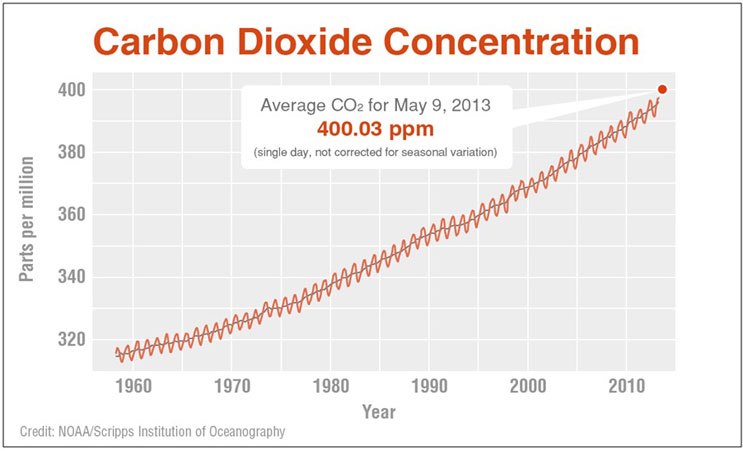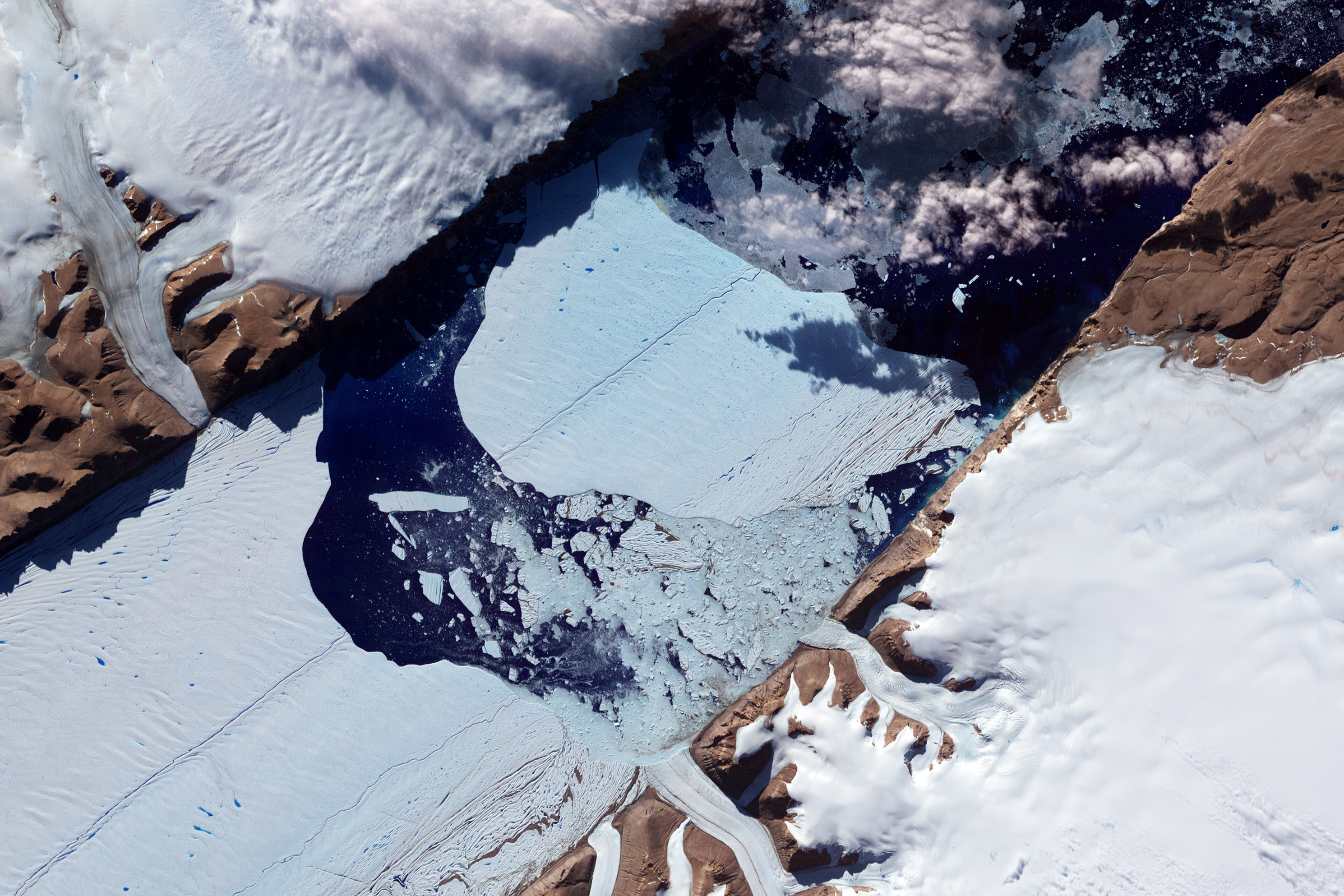Climate change is being caused by the release of carbon previously stored in fossil fuels when those fuels are burnt to produce energy to drive the modern world and so releasing carbon dioxide in the process.
Climate Change
Misconceptions and Objections
Climate change (global warming) is the heating of the planet above the temperature it is expected to be from recent experience. The global average temperature is rising at a rate far faster than ever before and it is the activities of the human population over the last 150 years or so that is causing it.
Connected pages: climate change facts and overview | Antarctica and climate change | save the poles from climate change
1 - Climate change is just a theory and scientists disagree about whether it is happening and whether it is anything to do with human activity.
There is a very strong agreement in the scientific community that climate change is happening and that it is a result of man's activities in releasing carbon into the atmosphere that was locked away for millions of years in fossil fuels.
The evidence that the earth is warming is overwhelming
There will always be people who argue the opposite to any idea and they are vital to avoid blind adherence to what may turn out to be incorrect and to encourage further investigation and refinement of ideas.
There comes a point however where an alternative idea becomes something only considered by the occasional maverick (and don't mavericks love the idea of being a maverick?) and then just becomes something that isn't considered seriously any more.
Many who doubt mans influence on global warming by releasing carbon dioxide from fossil fuels are driven by a dislike of taxes that are being raised by politicians as a result. Arguments frequently start with not wanting to pay tax and end up with deciding global warming is not happening.
97-98% of climate scientists agree that climate warming trends over the last 100 years are most likely the result of human activities, the remaining 2% of studies either contain errors or are not repeatable. A 2019 study found the consensus to be 100%.
2 - The amount of carbon dioxide hasn't risen enough and there is only a tiny amount of it anyway - it can't possibly make any difference.
The amount of atmospheric CO
The amount fluctuates slightly over the course of a year.
In 2012 it first reached 0.04% in the Arctic, in 2013 it reached
this in Mauna Loa, Hawaii where systematic measurements of carbon
dioxide first started in 1958. In May 2015 it reached 0.04%
or 400 parts per million as a global average for the first time.
Half of this rise from the 1832 starting point has happened
since 1980.
Current
CO
If we consider the
atmosphere to the top of the layer known as the stratosphere,
this takes us up to 50km from the surface of the earth, the
atmosphere goes beyond this to 690km, the edge of the "thermosphere"
and beyond, but this will do for now.
If all 0.041% of this that is CO
To try and put it in some kind of
context, compare this to another atmospheric gas you may have
heard of, ozone. The ozone above our heads protects us from
ultra violet rays from the sun, without it life on earth as
we know it would be impossible (the immediate effects would
be appalling sunburn on overcast days). If the ozone above our
heads were collected together in a continuous layer it would
be about 3mm thick (1/8th of an inch) by comparison the 0.041%
of CO

3 - Global warming can't be true as the temperature in some places is stable or falling.
Climate change models differ as to the exact effects of where and to what extent temperatures will change, but they all have one thing in common - that the effect of global warming is not uniform.
Different parts of the world react in different ways and one of them is that in the early stages (where we are now) the temperature in some parts of the world will actually fall or at least remain stable which is what is being observed in East Antarctica for instance. Eventually as warming advances, then most or all parts of the world will rise in temperature, though again - not at a uniform rate.
4 - Global warming is a good thing as I don't like the cold.
Well maybe from a egocentric point of view it could be a good thing. I live in the UK and many projections show that this will increasingly become a more predictably warm, possibly more attractive and more pleasant place to live. If we can restrict further warming to 1-3° C, there will be a balance of loss and gain (keep your fingers crossed you don't live in a loss place), beyond this it is a net overall loss.Above 3° C the areas that benefit however will be greatly outweighed by the parts of the earth that become too hot and dry to inhabit. Coastal towns and cities, including some of the worlds greatest cities may be flooded and so have to be abandoned or extensive flood defence barriers will need to be built if that is possible.
Hundreds of millions of people could suffer from climate change, the winners will be a small proportion by comparison.
5 - Volcanoes
contribute most of the CO2 released into
the atmosphere each year.
Less than 1% of annual CO2 emissions come from volcanoes.from:USGS
Comparison of CO2 emissions from volcanoes vs. human activities.
Scientists have calculated that volcanoes emit between
about 130-230 million tonnes (145-255 million tons) of CO
Emissions of CO
Human
activities release more than 150 times the amount of CO
6 - If you do the sums, it just doesn't add up, we don't produce enough carbon dioxide to make any kind of difference.
The atmosphere consists of a VAST amount
of air, so even billions of tons of CO
The amount of carbon dioxide in the air has increased in
the last 150 years, It has been doing so since the industrial
revolution and is currently outside of any observed
natural cycle:

The above diagram is used courtesy of Robert A. Rohde
Global warming Art
How much carbon dioxide is released by a car?
1g of octane (the chemical name for the main
component of petrol or gasoline) takes 3.5g of oxygen to burn
it fully. This is 1 molecule of octane to 12.5 molecules of
oxygen. The complete combustion (burning) of 1g of octane produces
just over 3g of CO
This is the
counter-intuitive part in that 1g of a tangible substance (petrol
- octane - an easily visible liquid) is producing more than
3g of CO
This means that for a
petrol (gasoline) car, the mass of CO
Worth thinking about next time you're standing by the pump as all the fuel goes flooding into the tank, 50L of petrol weighs about 37kg, this is the equivalent of 111kg of carbon dioxide being released per tank full.
7 - The extra water vapour created by kettles, showers, baths, steam cleaning, car washes, cooling towers, industry, angry teachers etc. contribute to climate change.
The amount of water vapour the atmosphere can hold is largely a function of the temperature of the air, if water vapour is kicked out into the atmosphere but the temperature isn't right, the physics won't work and it will condense out, carbon dioxide doesn't work like that.Water vapour may add to the effects of global warming by adding to the earth's heat retentive blanket in a positive feedback effect. More carbon dioxide means warmer temperatures, means more water vapour in the air, means warmer temperatures. Water vapour alone is not the reason for global warming and certainly not the starting point.
8 - Carbon dioxide released from fizzy drinks is a contributing factor to climate change.
The good news is that nearly all industrial carbon dioxide is reclaimed from processes that release it in the first place rather than generate it specifically for another use - so it is nearly always recycled.Of course that does mean that it has been released, but it's
cutting down on the amount a little at least.
The carbon
dioxide that fizzes your drinks up today could have come from
burning fuel, yeast that were busy making beer or some chemical
process that releases it as a by-product.
9 - Exercise produces carbon dioxide, so if I don't do any I'm helping the planet
We breathe out carbon in carbon dioxide as a by-product of respiration, the more we respire the more we produce. The carbon comes into our body in our food and the oxygen comes in by breathing.This carbon in the food we eat is a part of the natural carbon cycle whereby plants and animals are balanced. It does not contribute to global warming as it will be recycled when it is taken in by a plant for photosynthesis via carbon dioxide in the air.
The problem with carbon dioxide and climate change comes from carbon released from fossil fuels where the carbon has lain locked up in a carbon-sink for many millions of years and is now released into the atmosphere. If we didn't burn fossil fuels (or do other processes such as making cement) then mankind would pretty much carbon-neutral - as we were before the industrial revolution.
Picture credits, copyright pictures used by permission: Petermann Glacier - NASA Goddard Space Flight Center, used under Creative Commons 2.0 license

